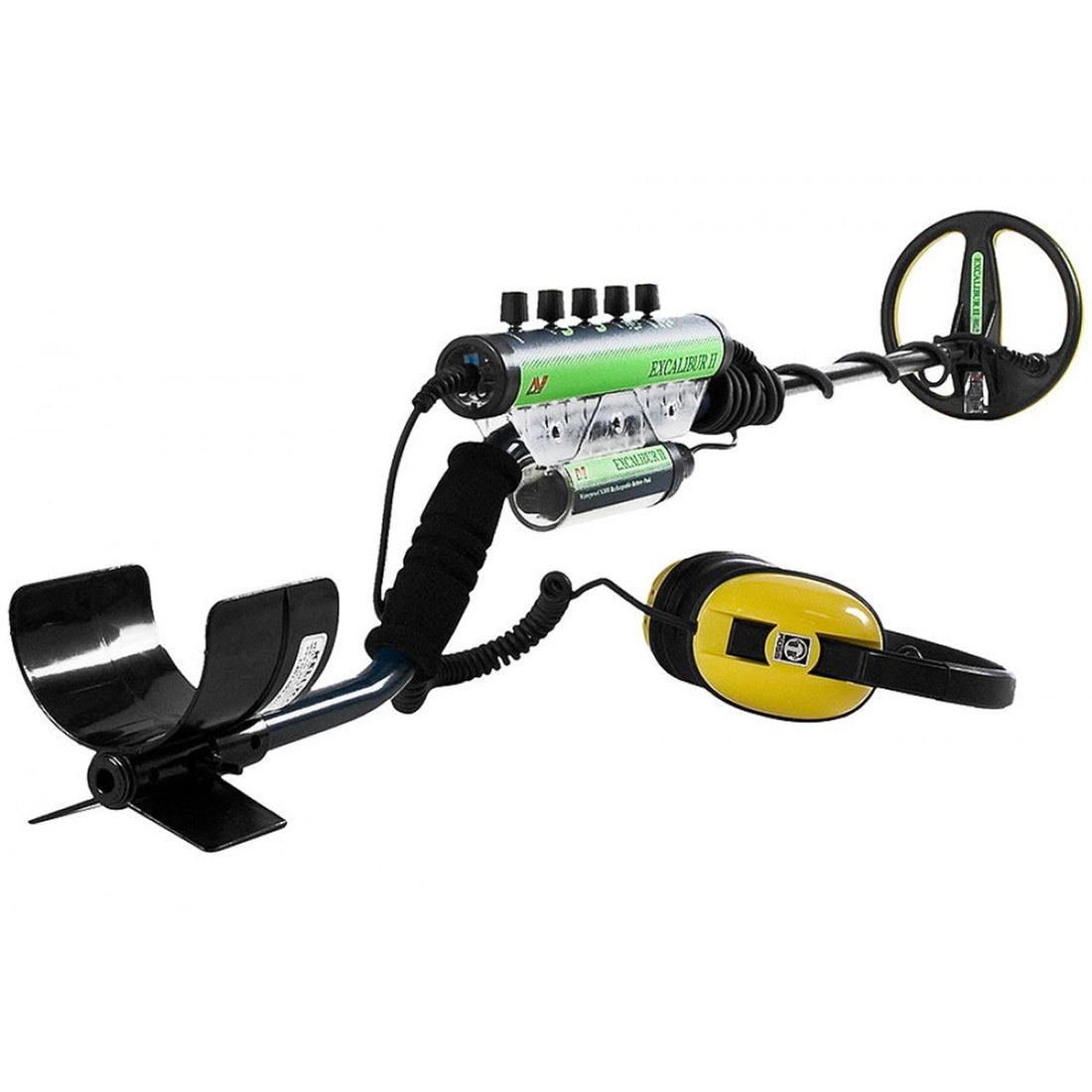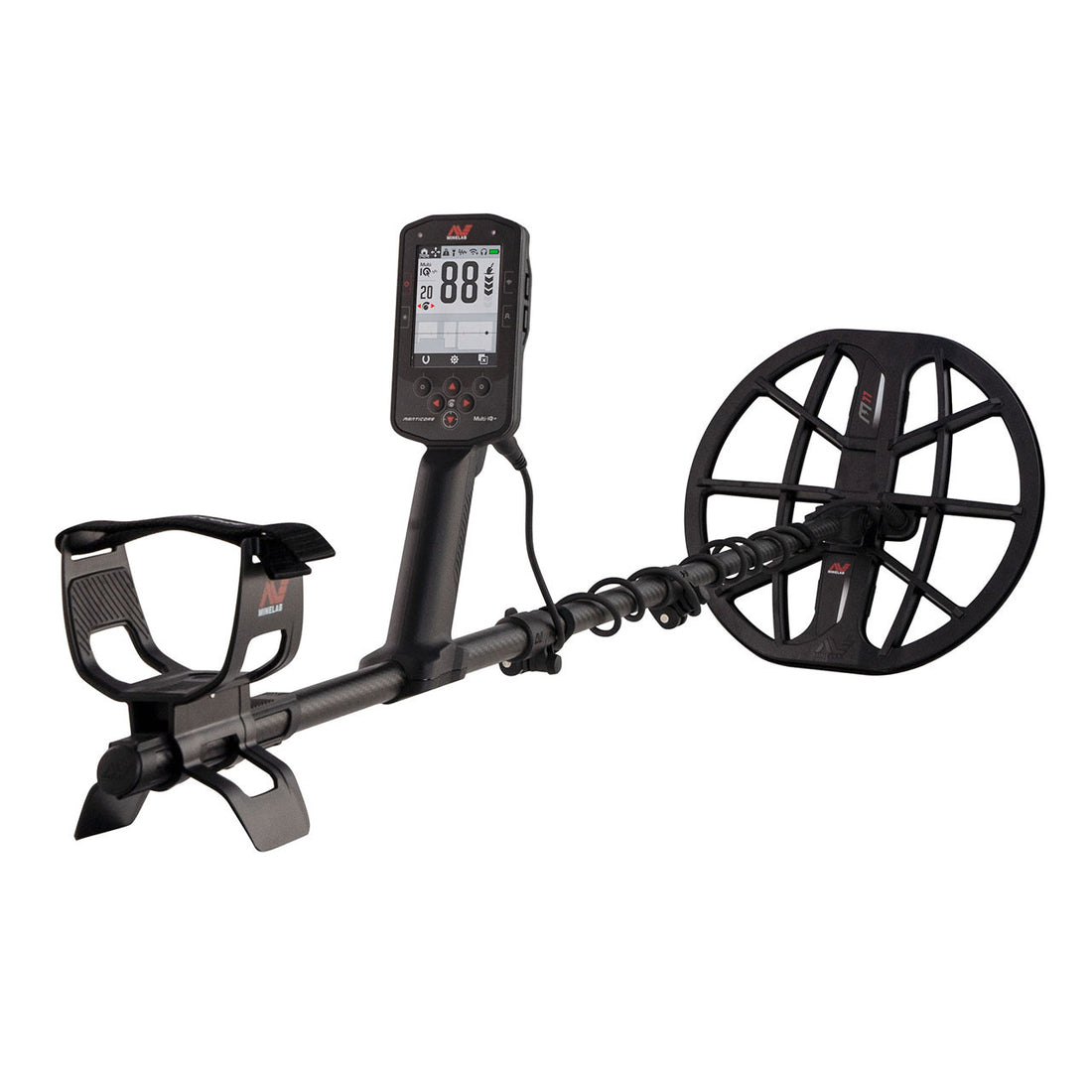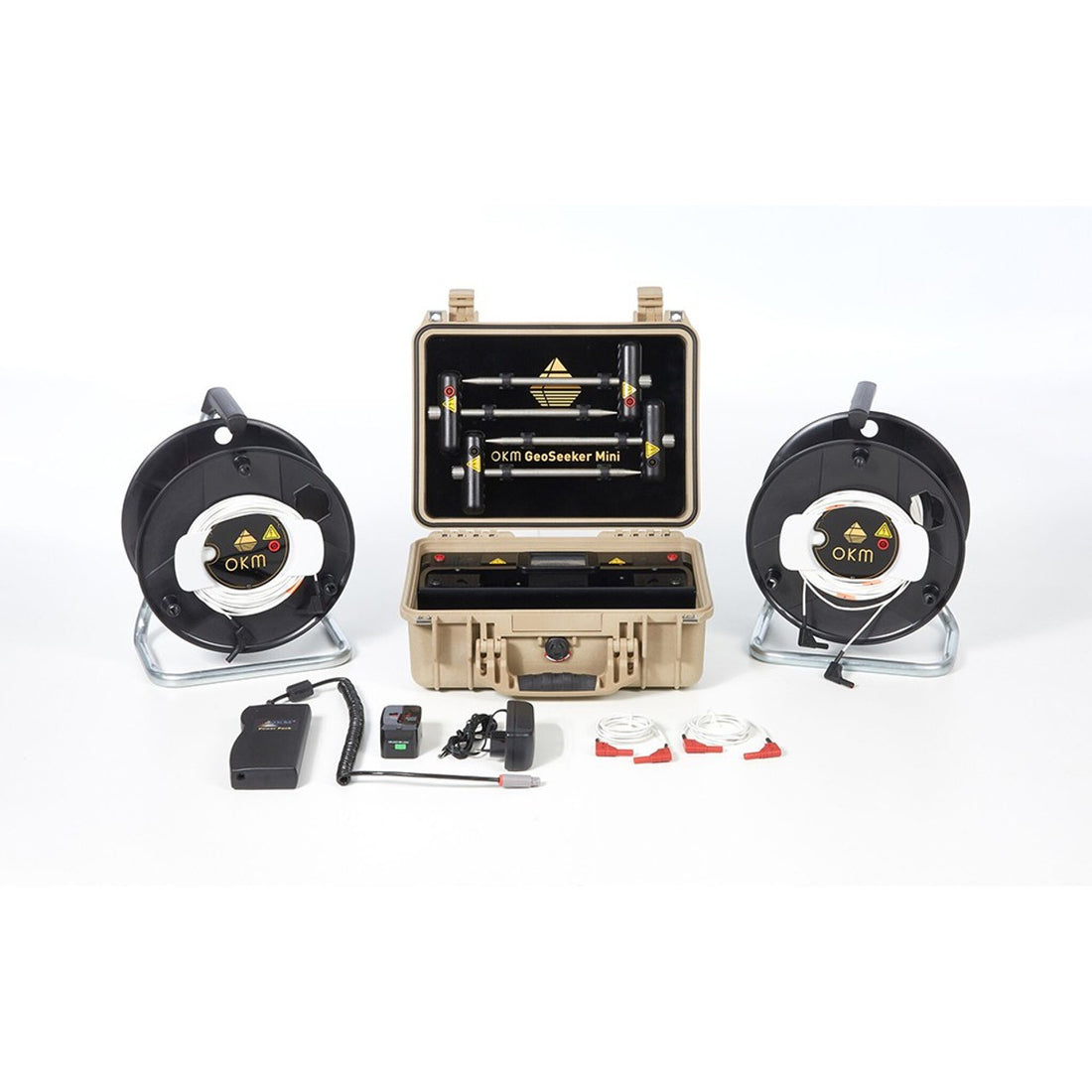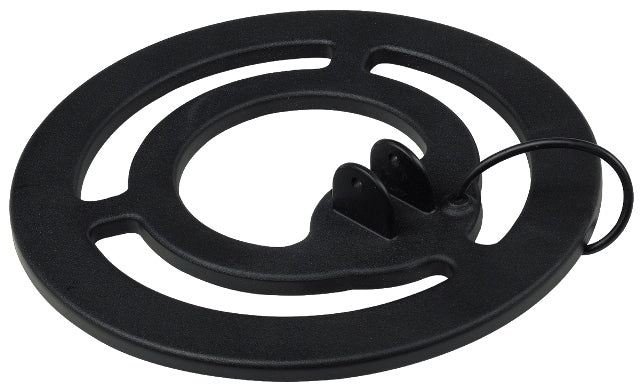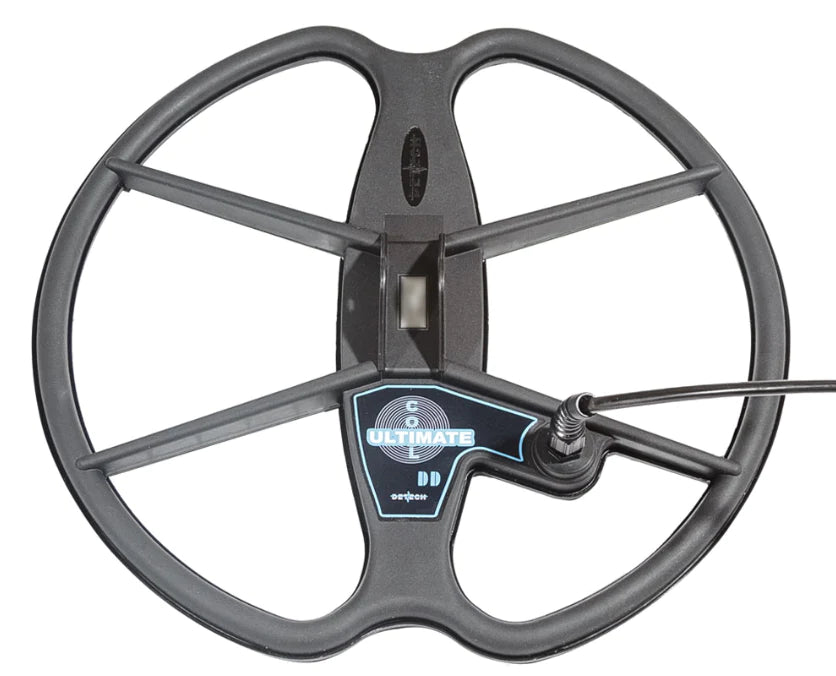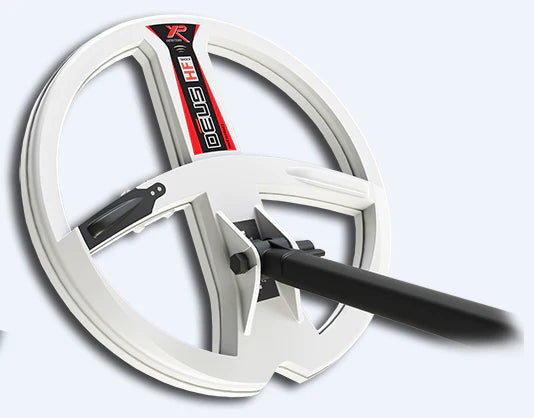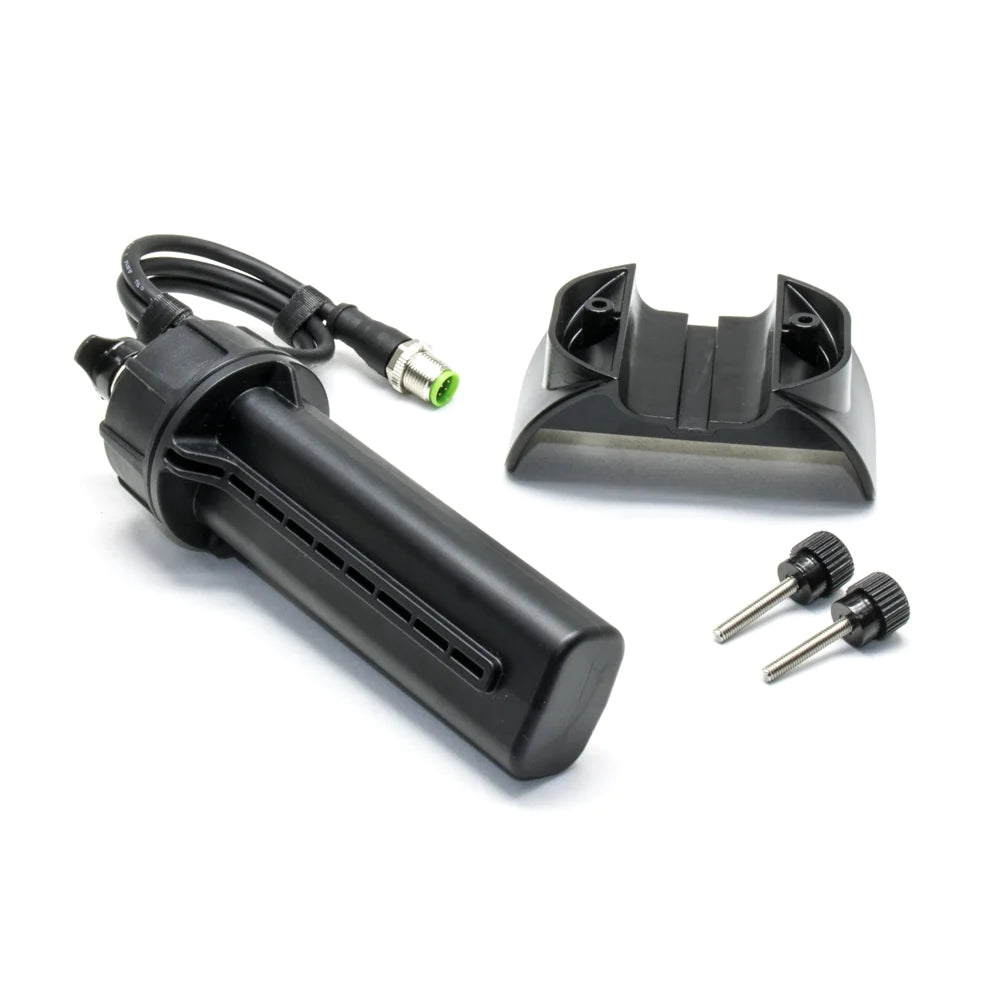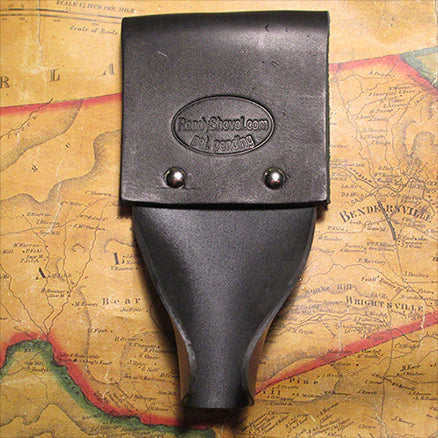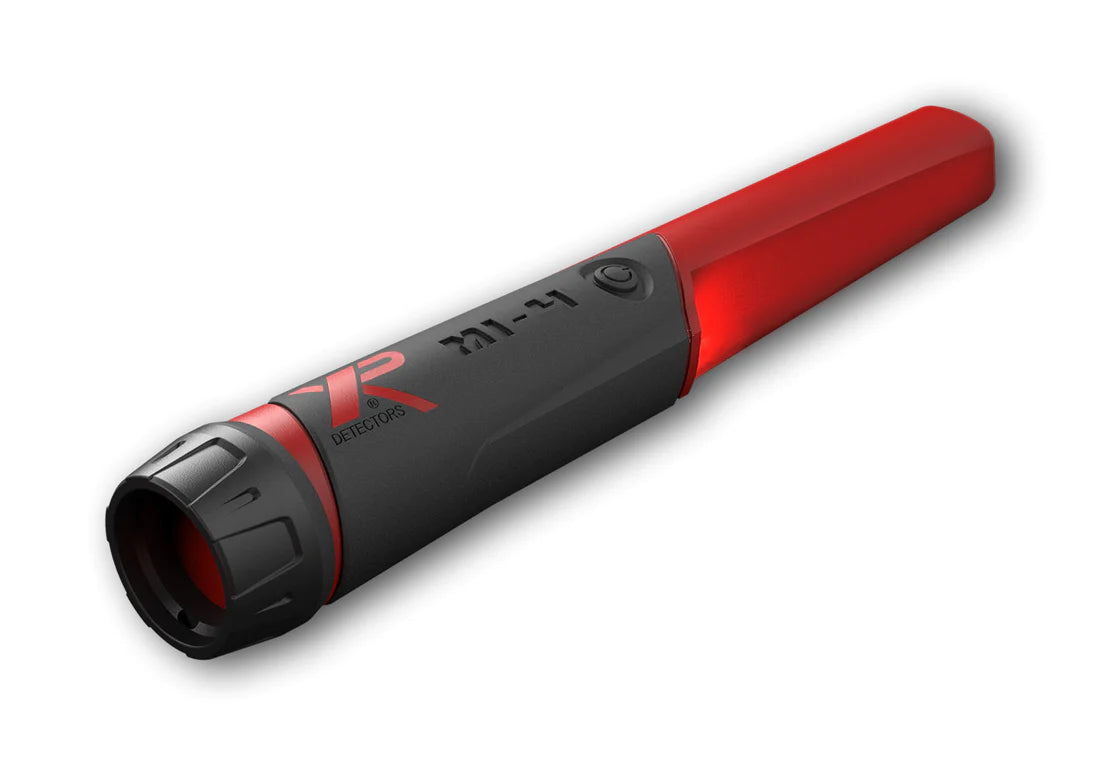GNRS Adventures with the Tejon
Click here to purchase the Tesoro Tejon
The Grand National Relic Shootout (GNRS) is an event that happens only once a year in October. The excitement starts when the drawings are held for team positions. The drawing is held online on the Treasure Depot's GNRS forum. Each person is allowed two entries. I chose to use both of my entries to try to get on Team Tesoro. It seemed like forever from the time I posted my entries and the time the results were announced. Even though it was only one day, it seemed a lot longer. I made the team and immediately emails were being sent out asking for information on what type of detector I used, how long I'd been hunting, and various other questions from fellow teammates trying to get a feel for the team. There were 16 of us representing Team Tesoro for the 2003 GNRS.
After the initial thrill of the draw, things settled down until a few months before the hunt. Tesoro released a new relic machine named the Tejon, and the forums were all a buzz about how well this detector was performing. I knew I had to have one before the event so that I'd be sure to have the best machine Tesoro offered. I wrote James Gifford a letter asking if he could help out his team in some way. That help came in the form of a one-time discount on purchases made by team members. I couldn't pass this up and ordered my Tejon the same day our manufacturing representative, Scully, sent out the email with the good news. My Tejon arrived, and I was determined to learn “the Animal” the best I could in the month before the hunt. Emails among team members again began to fly as the excitement was starting to build.
The Tejon is really a powerful machine. It is very “high strung” and once properly ground balanced will get very good depth. I was hunting a site that gave me a good mixture of hunting conditions. I had a settlement fort that had several areas loaded with iron and other areas that were almost void of trash but had deeper targets over large areas. I was very excited on how the Tejon was hunting and couldn't wait to try my luck at digging some Civil War relics in Virginia.
Finally, the day rolled around, and I carefully packed everything but the kitchen sink to take with me. I flew to Virginia and got to the hotel about 4 hours before the opening ceremony. Team Tesoro got together so that we could all meet one another. It was good to finally put some faces with the names I'd been communicating with in all the emails and on the forum. The hotel was full of detecting enthusiasts that were as crazy about metal detecting as I was. Stories were swapped, strategies were laid out, and the excitement was mounting.
The opening ceremony was short, sweet, and to the point. We all got our instructions on when and where to be and how the event was going to be handled. The buses were set to roll out at 6:00a.m., the following morning, and the meeting ended. I stuck around and talked with some of the “old timers” in the hobby trying to listen and pick up as much information about relic hunting as I could. It was a little after midnight before I finally got to bed. I was more excited about the hunt than a kid was at Christmas time.
The alarm clock went off at 5:00a.m., and I was waiting for the buses by 5:45a.m. We all loaded and had a rather long ride out to the hunt site. When we got there, it was just starting to get light. It was a cold morning, but the weather forecast was calling for clear skies until Sunday. All the teams gathered in various spots getting their gear ready and double-checking their detectors. In the distance, I could hear someone sharpening a shove with a file, detectors beeping from all directions, and hunters discussing last minute strategies. Larry stood up on a chair and gave all the last minute rules and regulations and wished everyone luck. “We will dig relics,” he said and then the horn blew. Now, one thing that was promised to us never came—a map. I'm an ex-army guy and a map would have made me feel a lot better about my bearings. Instead, I just followed the pack and tried to remember all of the boundaries that Larry told us about. I ended up going to the far side of the property along the gravel road that marked the boundary for that side. I started my way up a steep hill swinging slowly and listening for any faint beeps. Hunters were all over that hill. Some of them were going so fast that I didn't see how they could have heard hub cap if it were only 2 inches deep. I dug several shotgun shells, 22 cal. Brass, and some other junk items. It was almost 20 minutes before I recovered my first “keeper.” It was a beautiful Regiment number seven fully intact with the iron loop fastener still attached. Talk about being excited. The pressure was off to find that first keeper. A foot away, I got another good smooth signal and recovered my first eagle cuff button only 2 inches deep. I continued to work my way up the hillside but only found modern hunter's brass and some square nails. It was some time before I got my next good find.
I was hunting slowly through an area and saw another hunter recover an eagle cuff button. He didn't stop and search the area but rather kept walking a straight line. I then went over and began working the area and managed to find my second eagle cuff button at around 5 inches. Things slowed down again, and I didn't find my next keeper for over an hour. I was digging camp lead and Civil War era iron trash but no good keepers. I then got a great signal in an area that looked like about 100 hogs had worked through. I recovered my first minie at 6 inches. I had never found a 3 ringer until right then. I've dug a few William's cleaners but never knew if they were from the Civil War or not. This bullet was my first Civil War period bullet, and I will always remember it.
This event was a series of firsts for me, and I was having a blast. The day was a little over halfway through, and I felt pretty good about having several finds. I talked to a lot of hunters who had a lot less so I felt grateful to have what I did. I decided to try my luck in a different I spot, and I ended up finding a dropped .69 round ball. I searched around that area slowly and got another good signal. It turned out to be a Company letter “A” just under the leaves. It wasn't in great shape and both the “legs” of the “A” were gone, but I could still identify it. That turned out to be my last keeper of the day, and I heard the horn sound for the end of the first day of the GNRS.
I headed for the starting point to check in my finds and get my score for the day. It was very exciting seeing all the relics that everyone dug. I heard that someone from another team found a gold coin. A soldier I.D. tag was found, and several plates were being checked in. Nothing gets your heart pumping faster than seeing those types of relics. Even though this was the third hunt on this site, there were still a lot of relics being found. I remember talking with a fellow early on that first morning who had hunted this same site in the Spring North/South hunt, and he swore that there was nothing left, and it was “hunted out.” Ye have little faith. Or maybe he wasn't swinging a Tejon!! Plenty of great finds were being made to prove this site still had some good stuff left. I already couldn't wait for day number two.
Click here to purchase the Tesoro Tejon
That evening I was talking to as many folks as I could, trying to learn where and how people were finding stuff. It was a 50/50 split—surface hunting and pit digging. (Those who are GNRS purists feel that pit digging isn't a true test of a detector. In an event that is supposed to match machine against machine, pit digging is sort of a “cheat” in some peoples' minds.) I chose to surface hunt again on Saturday because I didn't know the first thing about digging a pit.
For those of you not familiar with pit digging, I'll explain. Soldiers in winter camps during the Civil War used to dig down a couple of feet and build a more protected type of shelter during those long winter encampments. Some used brick to line the walls of their hole and others used wood. They would put their material over the top and also had some sort of fire pit to help keep them warm. The pits were easy to spot as most looked like a depression in the soil. They were all lined up in a row in a nice measured military fashion so finding them wasn't too hard in most areas. In other areas, there weren't any depressions so finding them required probes and a lot of experience. Digging pits is very labor intensive and takes a lot of time. I thought that I'd wait until Sunday to try my luck at pit digging.
Saturday morning I started hunting an area that I didn't cover the day before. I worked my way up a ridge where others were digging pits. I hadn't found my first keeper, and it was already about 10:00 a.m. I stopped and talked to one of the fellows digging a pit to try and learn something about it. He found a few eagle buttons and a J-hook but not much else. I pressed on with my surface hunting. Just down the hill, I recovered an item I couldn't identify. I knew it was old, but I just didn't know what it was. I later found out it was a nipple protector for an Enfield rifle. The brass chain was completely intact and attached to the iron protector. I continued up the ridge without much luck and found myself all the way at the other end of the property. No keepers except the nipple protector. I kept working my way around the property boundary and finally got a nice deep smooth signal. I found my second three ringer at around 7 inches. I started working a grid in that area and found some camp lead and another three ringer. I was on cloud nine. I finally found a little patch of ground that was still virgin. By the amount of lead scrap, I knew no one had hunted over this area yet. I found several more three ringers and then got a slightly different signal. At 8 inches, I pulled out a nice 62 “fatty” Indian Head coin. I was really impressed with how well the Tejon sounded off on this target. I kept searching around this area and found 2 more three ringers and an eagle coat button back. I was hoping for a nice plate or buckle, but at least I had some keepers in my pouch. It was getting late, so I started my way back toward the starting point. The only other finds on the way back were three percussion caps that were all in one small area. It really amazed me how well the Tejon sounded off on those small items. I was hoping for more on this last day for scoring, but I just didn't get my coil over that big find. I heard the horn sound and made my way back to the check-in point. There were some really amazing finds being turned in. Most of them were coming from pits so I knew what I was going to do on the final day of the event. Dig me some pits!!!
That night we held the closing ceremonies and all of the finds were on display. It was a great learning experience for us new to Civil War relic hunting to see those types of finds up close. There were breast plates, SNY buckles, and an assortment of all types of buttons. A fellow Team Tesoro member dug a nice CSA cast button in great shape. He also dug 2 U.S. buckles along with several other great finds. It was wonderful seeing all of the relics in one room as it gave me a better perspective on the large amount of items dug during this event.
Day three was a free-for-all to hunt with any detector and no points were scored. I wanted to try my luck at digging pits so I hooked up with a fellow teammate who had dug several pits the day before. Kevin Walls ended up being Team Tesoro's top point scorer so I knew I had someone I could learn from. Kevin was very helpful and patient with me and identified all my items that I couldn't. I started digging one pit and it just didn't feel right. I ended up filling it in with my only find being a scrap of iron. I then found a nice looking depression that looked as though it had never been dug.
I started by clearing all of the leaves and marking the outline of what I thought was the pit. I started on one end and dug all the way to the floor of the pit. It was easy to tell where the floor was, as it was very hard, compacted clay. I was trying to go slow and dig very carefully so that I found everything. I was digging a strip of dirt about a foot and a half wide and deep as the pit itself. In that first strip of dirt, I found 2 three ringers and a lot of lead blobs. In the second strip of dirt, I found several more three ringers and then a brass item that I wasn't sure about. I took it over to Kevin and asked him what it was. He poured a little water over it and looked at me with one of those, “You got to be kidding me looks.” He said it was a folded over bugle emblem. It wasn't in the best of shape, but it was something that I'll keep forever. He said I had beginner's luck, and I had a good pit. I went back to work and continued pulling out lead blobs. I then found a patch of 4 pistol bullets, then a pocket knife, and even an inkwell. The inkwell was broken at the top but was about 85 percent intact. I found the fire pit and around it a lot of melted lead and 2 eagle coat buttons that were in pretty bad shape. Next, I found some poncho grommets and then a cartridge box finial. I found a group of three percussion caps with the paper still around them. Most of these items I had to ask Kevin what they were. By now, he was on his third pit and kept telling me how lucky I was to have a pit with stuff in it. I was over halfway through my pit, and it was about 2:00 p.m. The second half of the pit only produced one more three ringer and more melted lead. By the time I was finished, I had a hole that was about 3 feet deep, 7 foot long, and 4 foot wide. It took me quite a while to fill it in, and when I finished, it was about 3:30 p.m. I only had enough time to surface hunt back to the start point. I didn't find anything on the way back, but I was too tired to care. I had dug my first Civil War hunt site and was very happy with my finds. It was a good thing I kept all the lead “blobs” because two of them turned out to be pistol bullets.
My overall experience at the GNRS hunt was great. I will go back to another one and hope to represent Team Tesoro again. The folks I met were some of the nicest you would ever want to meet. I learned first hand a lot about the hobby of metal detecting and Civil War relics. Go Team Tesoro in 04!!!
Click here to purchase the Tesoro Tejon
* - Reprinted with permission from Tesoro, "Metal Detector Information" - 21st Edition

